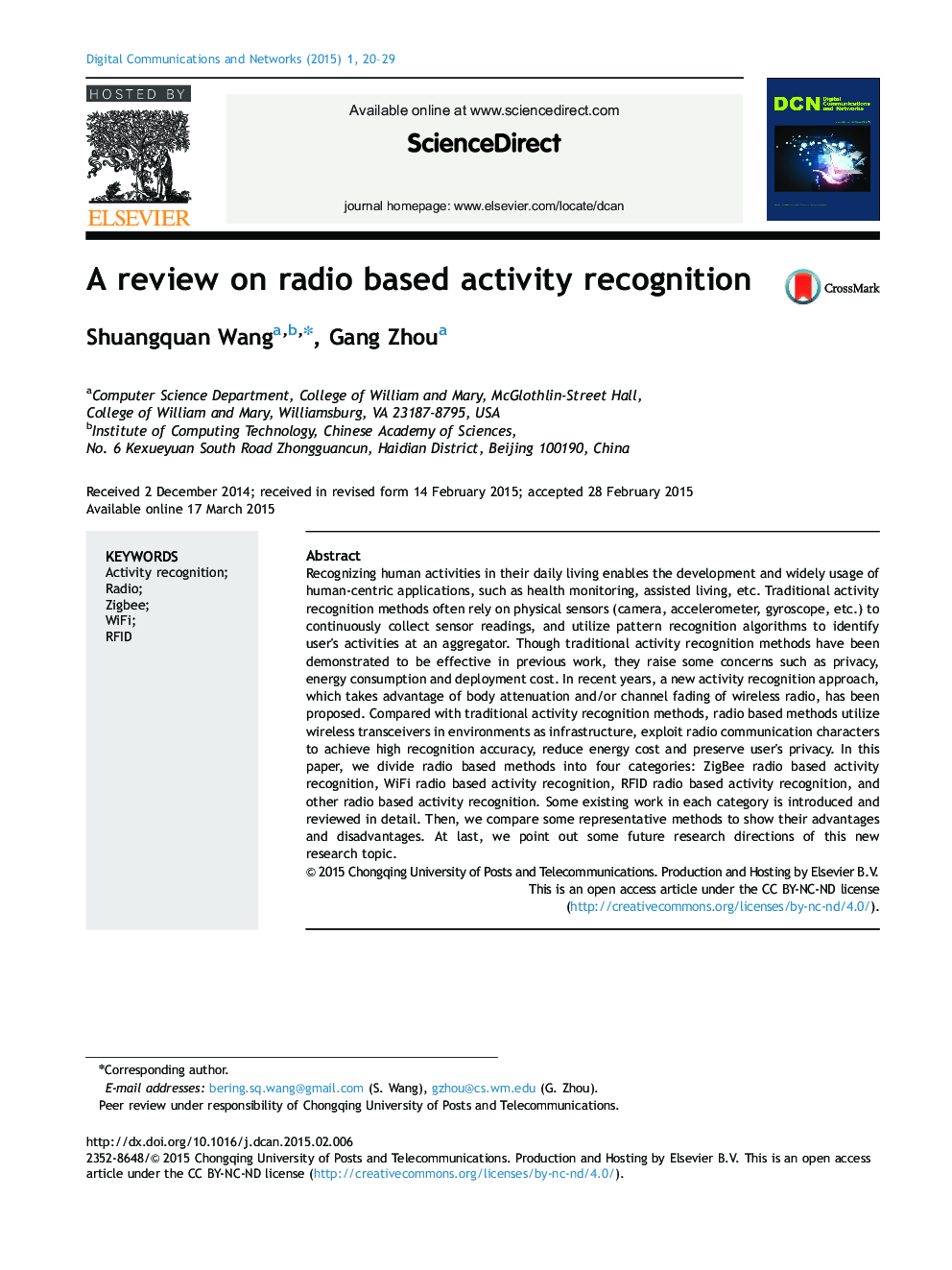| Article ID | Journal | Published Year | Pages | File Type |
|---|---|---|---|---|
| 704605 | Digital Communications and Networks | 2015 | 10 Pages |
Recognizing human activities in their daily living enables the development and widely usage of human-centric applications, such as health monitoring, assisted living, etc. Traditional activity recognition methods often rely on physical sensors (camera, accelerometer, gyroscope, etc.) to continuously collect sensor readings, and utilize pattern recognition algorithms to identify user׳s activities at an aggregator. Though traditional activity recognition methods have been demonstrated to be effective in previous work, they raise some concerns such as privacy, energy consumption and deployment cost. In recent years, a new activity recognition approach, which takes advantage of body attenuation and/or channel fading of wireless radio, has been proposed. Compared with traditional activity recognition methods, radio based methods utilize wireless transceivers in environments as infrastructure, exploit radio communication characters to achieve high recognition accuracy, reduce energy cost and preserve user׳s privacy. In this paper, we divide radio based methods into four categories: ZigBee radio based activity recognition, WiFi radio based activity recognition, RFID radio based activity recognition, and other radio based activity recognition. Some existing work in each category is introduced and reviewed in detail. Then, we compare some representative methods to show their advantages and disadvantages. At last, we point out some future research directions of this new research topic.
